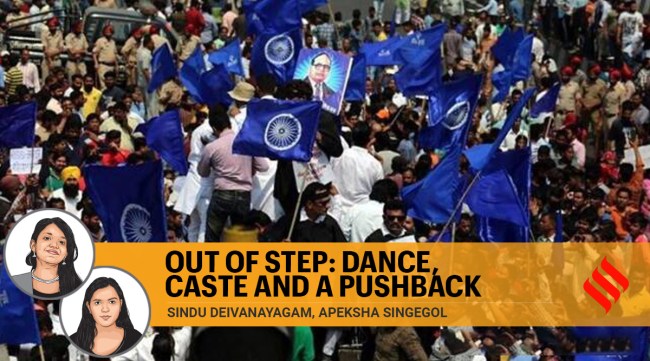Opinion Out of step: Dance, caste and a pushback
Being an Institution of National Importance, every Indian art form deserves a space in Kalakshetra. However, ideals of chastity, class, and caste have prevented the inclusion of growing art forms.
 Recent allegations rocking Kalakshetra reveal surreptitious sexual harassment beneath the façade of purity. (Representational/File)
Recent allegations rocking Kalakshetra reveal surreptitious sexual harassment beneath the façade of purity. (Representational/File) Founded by Rukmini Devi Arundale, Kalakshetra, Chennai, is a national cultural institution renowned for preserving classical dance and music which reflect Brahminical ritual and ideology. In March, Chennai woke up to the burning news of accusations of sexual harassment against a senior faculty member of Kalakshetra, considered an epitome of Indian art. The resistance against caste, class, and gender discrimination and exploitation in the institution still continues.
The art world has grappled with social stratification, including caste and class. Certain art forms are monopolised almost exclusively by Brahmins, who have valued it as “high culture” and devalued other art forms as “low culture”. Such derogatory hierarchies need to be challenged. In light of the Kalakshetra issue, it’s important to trace the discourse of classical art, its original form, and assertion of ownership over the art form by so-called high culture elites.
Bharatnatyam, a ‘classical art’, falls in this category. It was originally called ‘Sadir Attam’, which has been reformed into Bharatanatyam—‘the pure form’. Sadir Attam was performed years ago by ‘Devar- Adiyar’ (Devadasi), meaning ‘Server of God’, now used as a swear word in Tamil — ‘Thevudiya’, meaning ‘prostitute’. This evolution of the word shows a concerted effort by society to appropriate art for their purposes while marginalising, demonising and stigmatising the original artists — the Devadasis.
Though the Devadasi system was problematic, the way the elite nationalists dealt with the reform was unjust. They collaborated with the British to criminalise the Devadasi system, where practices and performances by Devadasis were gradually brought to a halt. This eventually took away Devadasis’ Inam land ownership rights which they received for their art performances in royal courts and temples. In a nutshell, they were denied agency over the art and land resource, two significant means of livelihood.
Giving it an undertone of purity, the Brahmanical elites justified the reformation of the art form by reducing ‘Shringara rasa’, i.e., the erotica from Sadir Attam, to give it the shape of Bharatanatyam. The art form was presented as pure and devout by eliminating the sexual overtones and omitting the bodies of lower-caste women. However, recent allegations rocking Kalakshetra reveal surreptitious sexual harassment beneath the façade of purity. Similar to how the “dedication practice” in the Devadasi system resulted in the sexual abuse of Dalit women, the Brahmanical ‘Guru-Shishya Parampara’, where devotion to the Guru is practised, has resulted in the sexual and cultural harassment of pupils. History repeats itself as voices are silenced. ‘Sadir Attam’ was reformed as the pure divine ‘Bharatnatyam’, much like how Dalit Gods such as Muniandi became the Brahmanical God ‘Munieshwar’. Brahminical elites forcefully assimilate certain cultures into their so-called high culture.
Making classical art an exclusive space only to the higher castes and discriminating against low-caste art forms have stirred many debates. The practice of maintaining pure spaces for pure art forms by elite castes has limited the space for art to grow, consequently leading to what we call ‘parochialisation of artistic knowledge and practice systems’. However, in popular culture spaces, the Gramscian concept of ‘counter-culture’ is emerging, where art forms are a weapon to combat historically rooted injustices and inequality.
Artists from hereditary dancing communities like Nrithya Pillai are performing the original elements of Bharatnatyam, thereby shattering the high-culture barriers. Initiatives like ‘The Casteless Collective’, ‘Neelam Cultural Centre’, ‘Justice Rocks’ are organising anti-caste initiatives in Tamil Nadu representing the low cultural art forms by highlighting Dalit social issues. The ‘Margali Katcheris’ (‘December Festival of Music’) is an exclusive Brahmanical event drawing primarily the Brahmin artists and audiences to sabhas. As a counter-culture, Pa. Ranjith’s ‘The Casteless Collective’ has initiated ‘Margaliyil Makkalisai’ with a tagline ‘Art belongs to everyone’.
Being an Institution of National Importance, every Indian art form deserves a space in Kalakshetra. However, ideals of chastity, class, and caste have prevented the inclusion of growing art forms. The lack of acceptance and openness has led to ‘parochialisation of knowledge and practice systems’. They have limited their space to an extent where Kalakshetra denied a book launch of T M Krishna’s ‘Sebastian and Sons-A Brief History of Mridangam Makers’, which dealt with ingrained casteism in the mridangam making by Dalit communities.
Just 12 km from Kalakshetra lies the Urur-Olkott Kuppam, a fishing hamlet and slum that’s culturally and socially cut off from the affluent neighbourhood. This crowd is blissfully unaware of the December Sabhas, Katcheris, Arangetrams and artistic revolutions happening next door. Kuppam is rich with Dalit art forms like Therukoothu, Gaana, Parai and Villupaatu. Activists and NGOs are trying to bridge high- and low-culture art forms by organising an art festival called ‘Urur-Olkott Kuppam Vizha’, where Bharatanatyam and Carnatic music are performed along with Dalit art forms. It aims to celebrate oneness by merging and dissolving the derogatory dichotomy of high and low culture.
Maintaining the purity status-quo in Brahminical spaces like Kalakshetra has only limited their artistic growth. Whereas, Kuppam has emerged as a colourful, diverse and inclusive space and is the epicentre for the merger of art forms. Here both the art and artists are treated with equal identity and respect, thereby democratising the art and art venues.
The writers are research scholars at the Centre for Research, CHRIST (Deemed to be University), Bangalore







